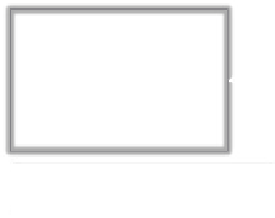Environmental Engineering Reference
In-Depth Information
measurements themselves are material indicators, i.e., they are acidity indicators. This begs the
question, “so what?” Four courses of action come to mind: (1) do absolutely nothing, (2) imple-
ment a ground surface neutralization program using perhaps a surface spray technique,
(3) monitor target components such as soil and water quality, environmental mobility of con-
taminants in the affected area, and (4) determine the source of the airborne-gaseous discharge
and rectify the situation through implementation of better process technology and more effec-
tive scrubber systems. Figure 9.1 illustrates this example from a land environment perspective.
Figure 9.1 shows that
indicators
(a) inform us on “where we are” in respect to speciic
indices and prescribed parameters, (b) provide speciic information to be used to compare
with (or contrast with) baseline values or other target values, (c) provide monitoring and
tracking information for use in determining the transient state of items being monitored,
and (d) tell us if we are on target or “off-track.” SO
x
, NO
x
, PM
10
, and TOMPs as shown in
the top right-hand corner of Figure 9.1 are
material indicators
. They provide information on
the noxious gases and other airborne contaminants that are responsible for the chemistry
of the airborne deposition of contaminants on the land surface. This information gives one
the opportunity to exercise any one of four different options—as shown in the diagram.
Depending on the nature of the contaminants (chemistry, concentration, distribution, etc.)
being deposited on the land surface, the distinct courses of available action are (a) actions
undertaken at the industrial plant itself and (b) actions taken to address the impact of the
deposition of the airborne discharges.
Action (a)
is essentially
source control
, e.g., improve
SO
x
, NO
x
, PM
10
, TOMPs, etc.
Indicators
Chemistry, concentrations and
distribution of deposited
contaminants
Ground
Process technology
Scrubber system, etc.
Source options
Plant and tree growth
Environmental mobility
of contaminants
Release of metals
Water and soil quality
Habitat and biodiversity
Plant and tree growth
Environmental mobility
of contaminants
Release of metals
Water and soil quality
Habitat and biodiversity
Monitor
Ind
Indicators
Remedial options
Do absolutely nothing
Buffering agents
Other ameliorative techniques
Buffering agents
Other ameliorative techniques
FIGURE 9.1
Illustration of the role of indicators in a typical precipitation situation in an atmosphere with noxious gaseous
and other airborne contaminants in the context of impacts on the land surface. The indicators shown do not
cover the entire impact problem. Note that changes to process technology and scrubber system do not fall
within the purview of this topic—and neither do plant-tree growth, habitat, and biodiversity. Note that PM
10
is
particulate matter less than 10 μm in size and TOMPs is toxic organic micropollutants such as obtained PAHs,
PCBs, dioxins, and furans from incomplete combustion of fuels.




























































Search WWH ::

Custom Search